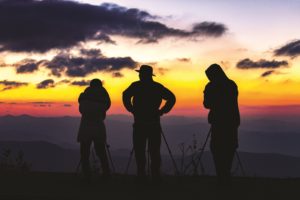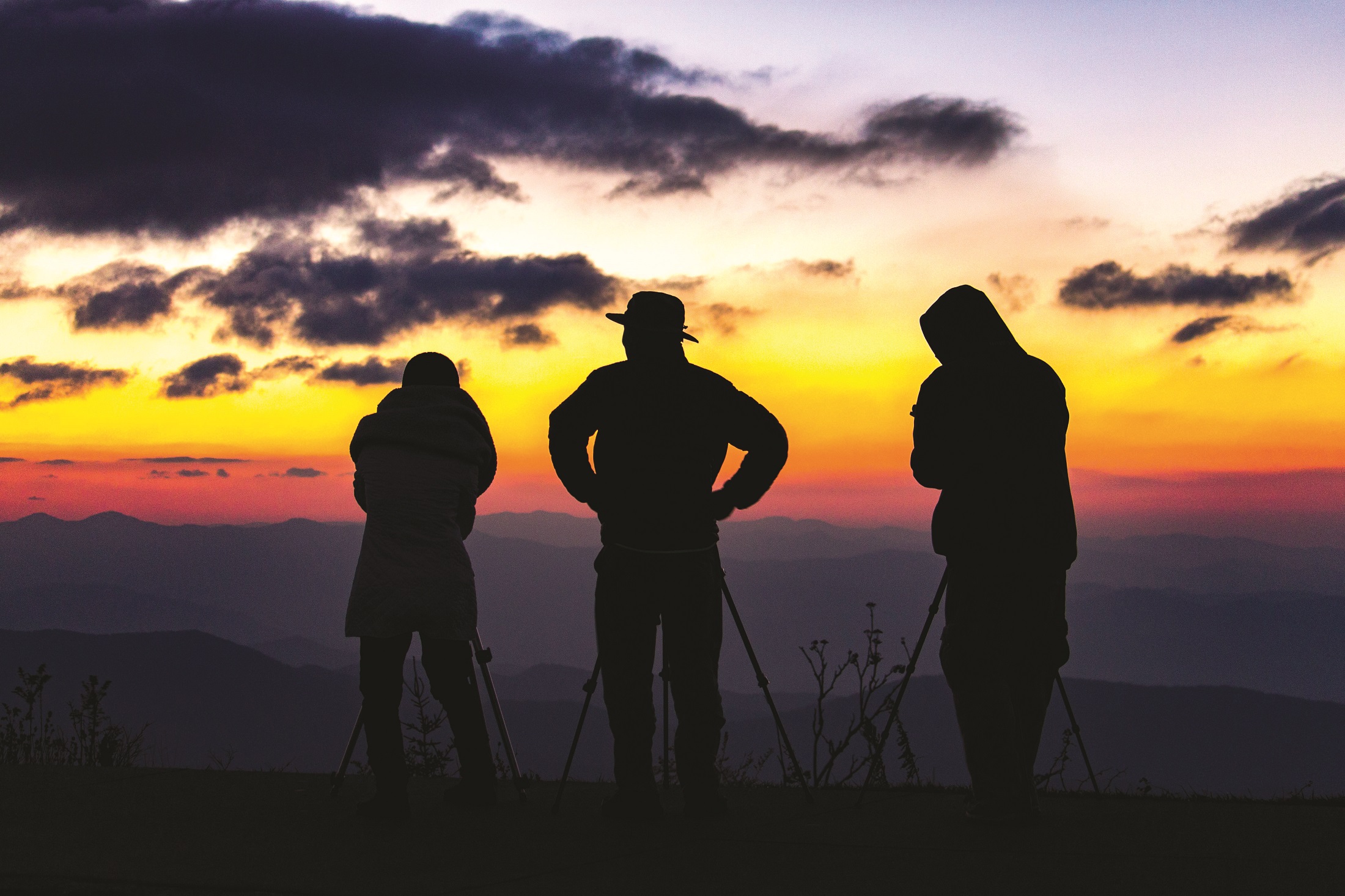Crowding in the Smoky Mountains

It was 11 a.m. on a beautiful and sunny Saturday when Matt Whitehead and myself left the Maryville College parking lot headed for the Great Smoky Mountains. Both of us being busy college students, our hope was to find some reprieve from the normal hustle and bustle of the mid-semester scramble.
Being somewhat new to the area, I was excited to see the Smokies during the leaf changing season. Little did I know I was in for a surprise. I was unaware of how incredibly crowded our beautiful national park gets during these peak season.
Per the data provided on their website, the National Park Service estimated that the Smokies had over ten million visitors in 2014.
So there we were, idling in a traffic jam on a narrow winding road. In a moment of ignorance, I thought to myself, “Man, I hope who ever crashed their vehicle is O.K.” I know now that I was way off as it was not an accident blocking the road, but general congestion due to a high volume of traffic.
At every turn-off and every trail-head there were people, lots and lots of people. The cars that were parked along the road stretched for miles. There were more people in the park that day than there were back in town.
As our intended campground destination had long since been full, we continued further and further through the park. What a beautiful site it was to see. Fall was in full swing and the different elevation levels in the park yielded different levels of color change in the trees.
The view was fantastic and the range of the colors of the trees encompassed a full fall spectrum from orange to garnet. A part of me was grateful for the slow moving traffic as it allowed us more time to gaze off into the rolling hills that spread to the horizon on either side of the road.
How could I blame all these people for wanting what I wanted too? We all wanted to be in those mountains that day.
This is when I decided to get some insight from the people who knew best about how to enjoy the Smokies.
Bruce Guillaume, Director of MC’s Mountain Challenge program, served on the board of tourism in Blount County for over 8 years. “In the 50s, the superintendents of the Smokies understood that this was going to be a park of convenience . . . that’s how the foothills parkway came about,” said Guillaume when asked about the major vein of traffic that snakes through the park.
“Most people that visit the Smokies never travel more than a mile from their car,” he later told me. That makes perfect sense I thought. I continued to question him about the trails that lead to the interior of the park; trails that take you far away from spots that are over-crowded due to ease of access.
“Don’t expect to be completely alone on the back-country trails either or in the shelters on them,” he warned me.
I was perplexed and somewhat disappointed in thinking that there may be no hidden gem of wisdom coming my way.
“I fully realized that just to the north and just to the south of the park boundaries are national forest and you would never know the difference,” said Guillaume when recalling the moment, he had decided to avoid the crowds himself. “It’s the same woods and the same trees and the same waterfalls, with less people,” he continued.
I was happy getting some good information and I wanted more. Dr. Drew Crain, a professor of biology at MC, was exactly the person I was looking for. He was a frequent visitor to the park and had researched the visitation trends in the park on a professional level.
At first, Dr. Crain had some great but typical suggestions for avoiding crowds. “Go early in the morning or late in the evening” and “avoid the well-known places that are typically over populated,” he told me. Finally, he said it, he gave me that little piece of knowledge only a local could tell me.
“On your way out to the park, stop at the Little River Trading Company. Tell them what you’re looking to find and they will flock to you with the best information,” he explained.
I knew then that I had found what I was looking for.
I had one last stop in my pilgrimage to find out how to enjoy the Great Smoky Mountains. Mr. Kim Trevathan, an Associate Professor of Writing/Communication at MC, is an accomplished nature writer, and I needed to hear from him on this subject. When I asked Trevathan about times when crowding may have been bothersome to a visit to the Smokies, he described a pretty serious situation.
“I had twisted my ankle after a long hike. The funny thing is that I was almost back to my car when it happened. I ended up getting back to my car just fine but because of congestion on the roads, I spent hours waiting in traffic while my ankle was swelling up,” he told me. This situation was a sad but uncommon situation so I pressed for further information.
“I typically reserve my time in the Smokies for the winter season,” Trevathan said. I thought for a minute on how beautiful a snow covered trail can be. “Some roads are closed, and you have to be aware of weather situations,” he warned me. “If you do it right, it’s extremely rewarding.”
I had discovered three great ideas that seemed obvious only after the fact. I had obtained the keys to enjoying the Great Smoky Mountains from the people who know best: remember that the National Forests neighboring the park are a great option for camping or day hikes, stop in and ask a local on your way out of town to get the inside scoop and brave the weather during non-peak seasons as those seasons are beautiful times too!

